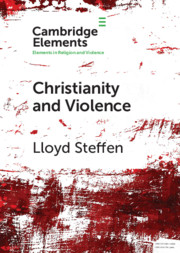Element contents
Christianity and Violence
Published online by Cambridge University Press: 20 April 2021
Summary
- Type
- Element
- Information
- Online ISBN: 9781108859271Publisher: Cambridge University PressPrint publication: 20 May 2021
Bibliography
- 9
- Cited by



